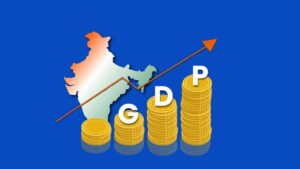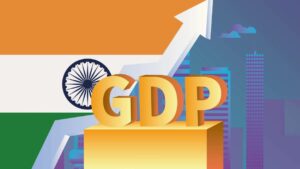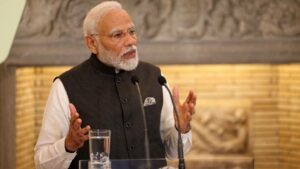As if the ongoing war in Ukraine wasn’t enough to have a negative impact on world economy in terms of a spike in the oil price and concerns of a broader regional conflict, Israel-Hamas war has added more fuel to an already elevated geopolitical tensions. Both are getting ample dose of solid catalysts due to the intense rivalry between the US and China.
Against this backdrop, almost all the agencies are going gaga over India, the world’s fifth largest economy. To start with S&P Global Market Intelligence – it has said in its latest issue of PMI that India is likely to overtake Japan to become the world’s third-largest economy with a GDP of USD 7.3 trillion by 2030. “The near-term economic outlook is for continued rapid expansion during the remainder of 2023 and for 2024, underpinned by strong growth in domestic demand. India’s nominal GDP measured in USD terms is forecast to rise from USD 3.5 trillion in 2022 to USD 7.3 trillion by 2030. This rapid pace of economic expansion would result in the size of the Indian GDP exceeding Japanese GDP by 2030, making India the second largest economy in the Asia-Pacific region,” it said.
The report mentions that an important positive factor for India is its large and fast-growing middle class, which is helping to drive consumer spending. “The rapidly growing Indian domestic consumer market as well as its large industrial sector have made India an increasingly important investment destination for a wide range of multinationals in many sectors. By 2030, 1.1 billion Indians will have internet access, more than doubling from the estimated 500 million internet users in 2020. The rapid growth of e-commerce and the shift to 4G and 5G smartphone technology will boost home-grown unicorns” it said.
Next in line is Deloitte India, which expects GDP growth in the current fiscal to be in the range of 6.5-6.8 per cent primarily due to upcoming festive spending as well as higher government expenditure before the national elections mid-next year. In its economic outlook report, Deloitte said India will need at least 6.5 per cent growth every fiscal to become the world’s third largest economy by 2027, with its GDP crossing USD 5 trillion. The country needs 8-9 per cent economic growth to become a developed country by 2047.
“In light of the Q1 GDP growth, we expect GDP to grow in the range of 6.5-6.8 per cent. What works in India’s favour on the private consumption front are the size of its consumer base, the rising income, and the aspirations of its young population, which is the largest in the world. As for investments, with the size and scale of operations it has to offer to global companies, the availability of skill and talent, technology and innovation capabilities, India continues to be an attractive investment destination,” Deloitte India said.
Industry body FICCI is also in the same line. In a recently released survey it says that the economic growth is expected at 6.3 per cent during 2023-24 on the back of good health of the financial sector and uptick in private investment even as downside risks remain.
FICCI’s Economic Outlook Survey pegs annual median GDP growth for 2023-24 at 6.3 per cent – with a minimum and maximum growth estimate of 6 per cent and 6.6 per cent, respectively. The median growth forecast for agriculture and allied activities has been put at 2.7 per cent for 2023-24. This marks a moderation vis-a-vis growth of about 4 per cent reported in 2022-23. Industry and services sector are anticipated to grow 5.6 per cent and 7.3 per cent, respectively in current fiscal year, the survey shows. FICCI said the survey was conducted in September 2023 and drew responses from leading economists representing industry, banking and financial services sector.
“Nonetheless, growth in India is expected to hold ground on the back of good health of the financial sector, robust urban demand, uptick in private investment as a result of government’s front-loading of capex, pick up in real estate/construction sector and the forthcoming festive season,” the survey said.
We feel India has a natural advantage on account of geopolitical stress and slowing growth in China. There is a unanimous view around the developed world that global growth is poised to slow in the current year and this trend is expected to continue in the year 2024 as well. So far Indian economy is remains relatively steady and unscathed from the external shocks. Let us hope it will remain so.





















